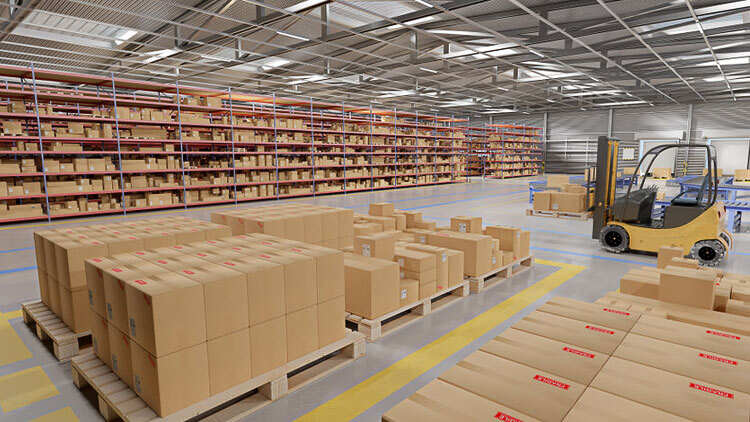
The supply chain is defined as the collaboration of numerous businesses to generate completed goods from raw materials and then distribute them to the consumer. As a result, the supply chain network is named after all contributors. This network enables companies to track the progress of a product from conception to completion. It also guarantees that the customer gets quality goods at the best price. In the long run, a good and successful business network might strengthen their relationship. By better matching supply chain strategies, supply chain network design is a robust modeling approach that has yielded considerable reductions in supply chain costs and increases in service levels.
What is the Importance of Supply Chain Networks?
The movement of consumer goods in your daily lives is primarily managed via supply chain networks. The supply chain personnel are trained and qualified to deal with any unexpected event. They can determine the most cost-effective way to get the merchandise to the customers. They achieve this by analyzing the issue and taking appropriate action. For most organizations, the supply chain network is critical, and it significantly boosts a company’s success.
Case Study on Supply Chain Network Design
Every business has its supply chain network model or architecture. As you all know, the supply chain’s network design is based on basic tasks. For example, the producer obtains raw materials from the supplier, manufactures the product, and then sells it to customers.
- The first step in network design in supply chain management is for the manufacturers to form a team that will design the best supply chain management system for the firm, as well as look at the important locations and collect all of the data needed to build the supply chain system.
- The data is acquired, analyzed, and developed into an appropriate chain network for the company in the second step. Meetings are progressing to validate the management system’s plan.
- Third, a trial must be planned to verify the plan’s accuracy. Then, with that in mind, a long-term strategy is devised.
- Fourth, different options should be considered to achieve the optimum supply system strategy. For finding the optimal supply chain model, all choices for supply chain network designs are compared to one another. Overall, the optimal model is picked based on cost and performance service, then evaluated practically.
According to the supply chain network design, there is no one-size-fits-all solution for the supply chain industry. There is no such thing as a plan that can be used indefinitely. Instead, you must stay current with the latest trends and be willing to upgrade to new technologies as needed. The company must adjust its plan after each interval of time based on the company’s performance and demand.
What factors have an impact on supply chain design?
Traditional linear supply chains are soon becoming outmoded due to volatile markets, frequently changing consumer demands, and persistent ambiguity and unpredictability. Their flaws are visible in their inability to keep up with and meet the needs of a varied range of customers, let alone identify prospective new client categories. A lack of scalability further hampers their response due to fragmented supplier networks and operational inefficiencies.
In 2022, there are a few things you can do to improve supply chain visibility
Having an internal picture of all actions and processes occurring from the point of raw material extraction to the point of consumption is what supply chain visibility entails. Increased visibility in the supply chain minimizes uncertainty and variation in the flow of goods and information. So here are a few specialties you can do to improve supply chain visibility.
- Collaboration with suppliers, partners, and rivals should be improved
Collaboration with suppliers, business partners, and even competitors can result in various advantages, including improved supply chain visibility.
- Vertical Collaboration includes working with suppliers, third-party logistics service providers, retailers, and so on. Developing solid, long-term connections with business partners can expedite the movement of data throughout the supply chain, resulting in increased visibility.
- Horizontal Collaboration with competitors or firms at the same level of the supply chain is referred to as this. Multiple suppliers, for example, can share the demand load and distribution infrastructure.
- Invest in innovative solutions After you have set your goals, the following step is to figure out which areas of your existing systems to improve and which integrated solutions can enhance supply chain visibility. Creating supply chain visibility necessitates sophisticated technology that delivers all of the data and analysis capabilities that your company requires to precisely and efficiently track the stages of your supply chain.
- Analyze the information Every organization should have systems in place to track key performance indicators, and it is critical to track these numbers and see where they fall in relation to your objectives. All data is useless without accurate analysis, and what does the data indicate? Are your goals realistic? Are your business methods and purposes in sync? This is where you enjoy the benefits of supply chain visibility by utilizing the data to improve your operations.
- Maintain a learner’s perspective Examine your company’s objectives and operations, and make adjustments based on new information. It is vital to keep in mind that producing supply chain visibility is not a one-shot deal. This is a long-term, continual cycle of improvement.
7 steps on how to reduce costs through supply chain network optimization
Even before the disruption caused by COVID-19, supply chain costs have risen considerably. Supply chain expenses are rising for a variety of reasons, including increased supply chain complexity, supply chains that span numerous channels, and customer expectations. These improvements are not going to last forever. Organizations must concentrate on cutting costs through supply chain network optimization. Here are a few ways to reduce supply chain costs to cut supply chain expenses and improve efficiency.
- Modeling the Supply Chain:
Consider including the full supply chain in the supply chain network model. Supply chain modeling, often known as developing a digital twin, allows you to think about bigger challenges. These are some of them:
- A product mix that is the most cost-effective
- The most effective supply chain network
- Optimal production and sourcing strategies
- Plant and distribution locations that are the best
- Distribution schemes with the lowest possible costs
These techniques, used together, enable you to lower total costs while still satisfying client demand.
- Review the Design of the Supply Chain Network
Most supply chain networks develop naturally, with little regard for their complexity at the time. The best Supply chain network model is reviewed to remove duplication and simplify structures. As a result, efficiency improves, and expenses decrease. The following are key steps in supply chain network design optimization such as:
- Defining the goals and objectives of the supply chain
- Putting together a supply chain network review group
- Creating a model of a supply chain network
- What-if scenarios using advanced analytics
- Scenarios for Run Optimization
The majority of supply chain networks are intricate. They include things like:
- Interdependencies
- Constraints
- Limitations on supply
- Transportation
There are two types of sourcing strategies such as single-source and multiple-source. As a result, determining the appropriate supply chain network optimization decisions is tough. Prescriptive analytics-based supply chain modeling can help you overcome this flaw. To examine different supply network situations:
- Use optimization software.
- Determine the most cost-effective solutions while ensuring that business objectives are addressed.
- Determine the limits and operational limitations. As your demands change, you can quickly assess new situations.
- What-If Scenarios Improve Supply Chain Resilience
True supply chain network optimization involves considering supply chain robustness, flexibility, and cost. Low-cost sourcing does not always equate to the lowest price to the organization, as many people learned during COVID-19. It is critical to have a balanced approach. Sales lost as a result of supply chain interruption raise total costs. To assure a supply chain’s ability to supply amid a supply network disruption, evaluate supply chain risk with supply chain cost. Think about what might happen if you determine your supply network’s resilience and capacity to fill orders during supply chain limitations.
- Ensure that your demands and desires are clear
In any supply chain network design effort, it is critical to provide clarity. Each level of the optimization hierarchy has its requirements and needs. A top-down strategy may be required if a thorough supply chain network design exercise is being considered. It should be emphasized that the strategy phase typically provides a time-phased long-term framework that inputs tactical planning. Tactical planning decisions are made in the context of a supply chain model framework that has been defined through strategic planning.
The operational network design exercise focuses on the cost-effective transportation of items across the supply chain and employs the crux of strategic and tactical decisions. Operational planning is based on precise figures with little clustering at the product and customer level. On a daily, weekly basis, decisions can be made. The operating structure is mostly the same, and the KPIs are generally supplied chain operational KPIs such as fill rate, out-of-stock, inventory turns, and so on.
- Selecting the Appropriate Supply Chain Network Optimization Software
Take a good, long look at what you require. Don’t be persuaded by sales pitches. Consider the distinction between supply chain management and supply chain optimization software. Also, be aware of the differences between the various types of analytics. Determine your maturity level. So select software for supply chain network optimization that matches your needs.
- Designing a Supply Chain Network
To decrease product handling, supply chain network architecture entails lowering costs and enhancing reliability. Each contact point between your supplier and your consumer increases expenses and the possibility of errors and damaged goods. Excessive handling, too many stock locations, and inefficient utilization of distribution locations can all result from a poorly constructed network. As a result, your distribution expenses will be high, and your customer service will be bad. Redesigning your supply chain network would necessitate specialized tools and analysis, which can be costly and difficult to handle independently. Working with a 3PL partner saves money in yet another way. They have the software and skills to build an efficient plan to resolve difficulties in your network.
Final Thoughts
Supply chain network optimization aids businesses in lowering costs and becoming more adaptable to change. You can be more confident that your risk analysis is thorough and precise if you use cutting-edge technologies. You can also improve the efficiency of your supply chain by reducing response times. So these are the above points that will help you know about the costs of supply chain network optimization.


